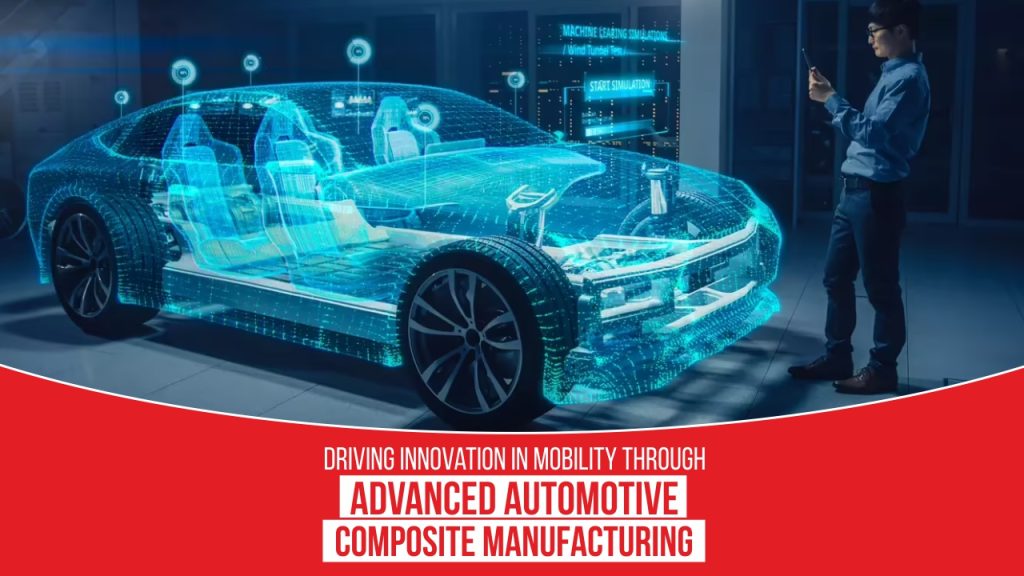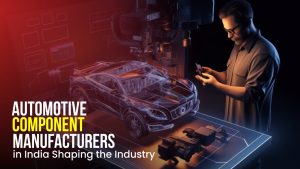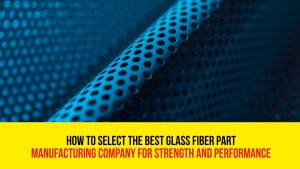In a world where mobility is being redefined by sustainability, performance, and lightweight design, automotive composite manufacturing has emerged as the driving force behind the transformation of the global automotive industry. From electric vehicles to high-performance sports cars, composite materials are not just enabling innovation—they are becoming essential for it.
At Rockman Advanced Composites, we are at the forefront of this materials revolution, crafting next-generation solutions that marry cutting-edge engineering with futuristic mobility demands. In this blog, we delve deep into how advanced automotive composite manufacturing is fuelling innovation in mobility and reshaping the future of transportation.
Understanding Automotive Composite Manufacturing
Automotive composite manufacturing refers to the process of designing, engineering, and producing vehicle components made from composite materials—typically a blend of fibers (like carbon or glass) and resins. These materials offer a unique combination of strength, stiffness, and lightness that far surpasses traditional metals.
Common types of composites used in automotive applications include:
- Carbon Fiber Reinforced Polymer (CFRP)
- Glass Fiber Reinforced Polymer (GFRP)
- Natural Fiber Composites (NFCs)
- Hybrid Composites
The goal is to manufacture parts that are lighter, stronger, and more durable—while meeting stringent safety and environmental standards.
The Shift Towards Lightweight Mobility
With stricter emission regulations, rising fuel efficiency demands, and the meteoric rise of electric vehicles (EVs), the need for lightweight vehicles has never been more critical. Light weighting directly impacts vehicle range, fuel consumption, and CO₂ emissions.
Traditional materials like steel and aluminum, while robust, add significant weight. Composite materials, especially carbon fiber, offer up to 50% weight reduction without compromising strength or performance. This is particularly crucial for EVs, where reducing mass increases battery efficiency and driving range.
Automotive composite manufacturing has thus become a cornerstone for OEMs (Original Equipment Manufacturers) aiming to develop next-gen mobility solutions.
How Composites Drive Innovation in Automotive Design
Unparalleled Design Flexibility
Composite materials enable complex geometries and seamless integration of functions. Designers are no longer constrained by the rigidity of metals—they can push boundaries to create aerodynamic, aesthetically pleasing, and ergonomic components.
Enhanced Crash Performance
Contrary to popular belief, advanced composites are not brittle. When engineered correctly, they can absorb and dissipate crash energy better than steel. Automotive composite manufacturing techniques now integrate energy-absorbing structures into vehicle crumple zones, improving passenger safety.
Reduced Component Count
With composites, multiple functions can be integrated into a single component—resulting in fewer parts, less assembly, and reduced manufacturing costs. This is crucial in automotive platforms focused on modularity and scalability.
Corrosion Resistance & Durability
Composites are inherently corrosion-resistant, making them ideal for underbody structures, battery enclosures, and exterior panels. This leads to a longer vehicle lifespan and reduced maintenance.
Applications of Composite Manufacturing in Automotive
Advanced automotive composite manufacturing has paved the way for a wide range of applications across various vehicle segments. Key components include:
- Body Panels– Hoods, roofs, doors, and trunk lids made from CFRP or GFRP.
- Structural Components– Chassis components, cross members, and side impact beams.
- Battery Enclosures– Especially in EVs, where composites offer thermal insulation and EMI shielding.
- Interior Components– Lightweight dashboards, seat structures, and trims.
- Suspension & Under body– Springs, suspension arms, and under body shields.
The use of composites is not limited to high-end vehicles anymore. With advancements in mass production techniques, mainstream manufacturers are also embracing this technology.
Role of Rockman Advanced Composites in Mobility Innovation
At Rockman Advanced Composites, we leverage state-of-the-art automotive composite manufacturing to deliver high-performance, lightweight solutions for global OEMs and Tier-1 suppliers. Our engineering excellence is backed by decades of R&D, precision manufacturing, and a deep understanding of evolving mobility trends.
What Sets Us Apart?
- Fully Integrated Manufacturing: From concept to production, we offer end-to-end capabilities in composite design, prototyping, and mass production.
- Industry 4.0 Readiness: Our facilities are equipped with automated, data-driven processes to ensure consistency, scalability, and high-volume throughput.
- Material Innovation: We constantly explore new resin systems, fiber reinforcements, and hybrid structures to meet the demanding performance criteria of modern vehicles.
- Sustainability Focus: Committed to eco-friendly practices, we’re investing in recyclable composites and bio-based resins to reduce our environmental footprint.
Composite Manufacturing in Electric Vehicles (EVs)
Electric vehicles represent the future of clean mobility. But they come with their own challenges—chief among them being weight and battery efficiency. Automotive composite manufacturing provides solutions tailor-made for EVs:
- Battery Range Extension: Lighter body structures reduce overall energy consumption, thereby extending the range of electric cars.
- Thermal and Fire Resistance: Composite materials offer built-in thermal insulation, essential for managing high battery temperatures.
- Design Freedom: EV architectures are more flexible, allowing for innovative composite-integrated platforms that improve space utilization.
Many next-gen EV platforms are now being designed around composite structures from the ground up—a shift that reflects the deep integration of materials innovation with product engineering.
Trends Reshaping Automotive Composite Manufacturing
Automation and Robotics
Automated tape laying, resin transfer molding, and robotic trimming are accelerating cycle times and improving consistency. This is essential for making composites viable for high-volume vehicle production.
Recyclability
With growing emphasis on circular economy models, manufacturers are focusing on recyclable thermoplastic composites and closed-loop manufacturing systems.
Hybrid Composites
Blending carbon, glass, and natural fibers with different resin systems creates hybrid structures optimized for performance, cost, and sustainability.
Digital Twin & Simulation
Advanced CAD, CAE, and simulation tools help in virtual testing of composite components, reducing time-to-market and prototyping costs.
Challenges in Composite Adoption—and Overcoming Them
Despite its benefits, automotive composite manufacturing faces a few challenges:
- Cost of Raw Materials: Carbon fiber and high-performance resins are still costlier than metals.
- Cycle Time Limitations: Manufacturing composites traditionally takes longer.
- Skill Gaps: Designing with composites requires specialized knowledge in material science and structural behavior.
At Rockman Advanced Composites, we tackle these challenges through:
- Volume-based pricing and localized sourcing
- Rapid curing techniques and process optimization
- In-house training and cross-functional engineering teams
Our mission is to make composites accessible, affordable, and scalable—so that every vehicle on the road benefits from this innovation.
Future Outlook: Composites and Autonomous Mobility
Autonomous vehicles (AVs) demand a new approach to vehicle design—lighter platforms, more sensors, and modular structures. Composite materials align perfectly with these needs:
- Sensor Integration: Composite structures can integrate LiDAR and radar sensors seamlessly.
- EMI Shielding: Special composites can protect AV electronics from electromagnetic interference.
- Noise Reduction: Composites naturally reduce vibrations and cabin noise—crucial for autonomous comfort.
As AVs become mainstream, the role of automotive composite manufacturing will expand further—beyond performance, into intelligence and adaptability.
Conclusion
The future of mobility is lightweight, electric, sustainable, and intelligent—and automotive composite manufacturing is the key to unlocking this future. As materials technology evolves, composites are no longer an alternative—they are the new standard.
At Rockman Advanced Composites, we’re not just participating in this revolution—we’re leading it. From design innovation to high-volume manufacturing, we offer automotive solutions that balance performance, efficiency, and sustainability.
Whether you’re a vehicle manufacturer, mobility startup, or R&D leader, partnering with us means you’re embracing a smarter, faster, and cleaner future—powered by the limitless potential of composites.








